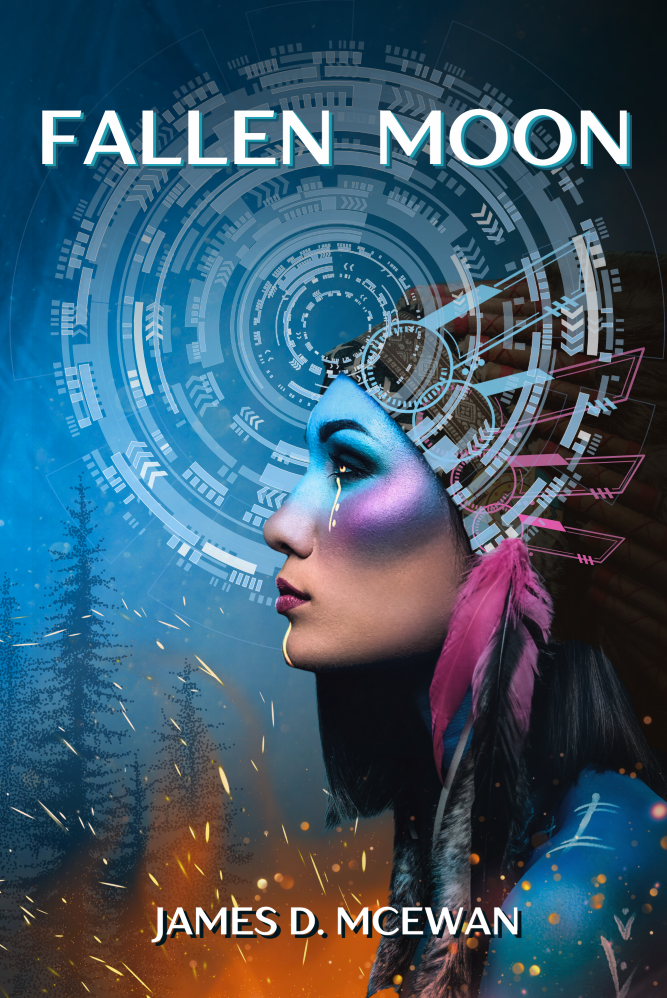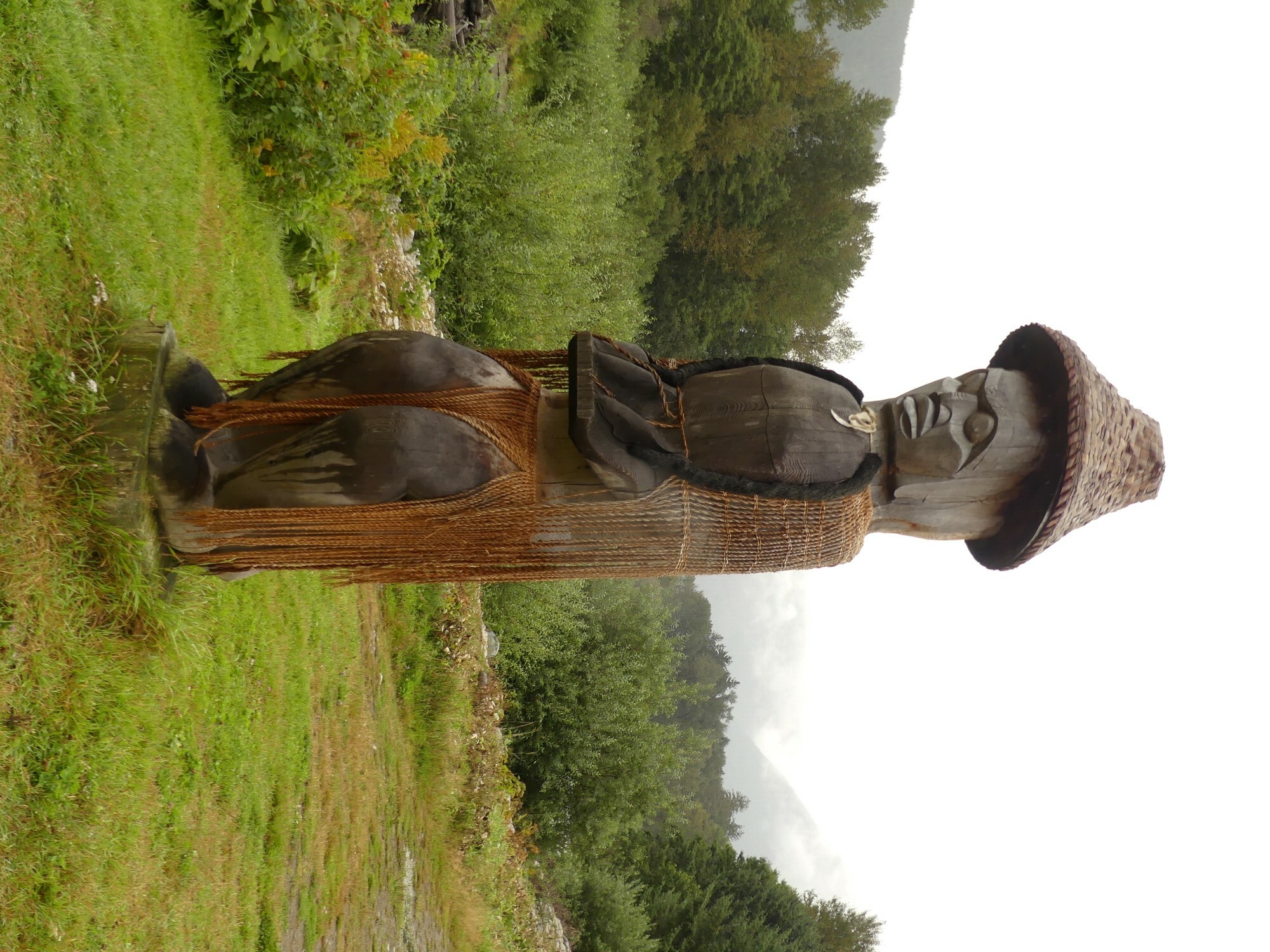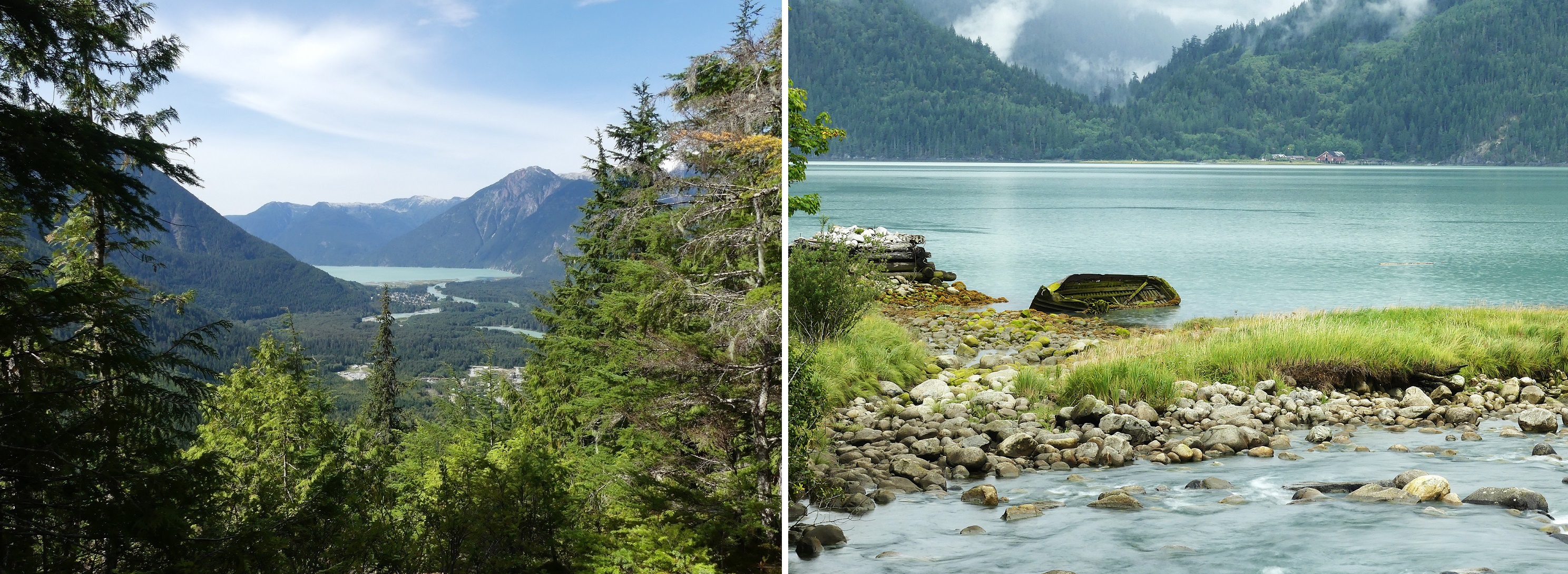The Story Behind Fallen Moon
Read the Fallen Moon blurb - click here
A Story from a Story
Fallen Moon came from a name on a road sign, a chance encounter, and a passion for the great, untamed outdoors. I’ve been to Canada’s west coast three times, the first in 2017, and most recently in 2022. I fell in love with British Columbia on my first trip, but it was the return in 2019 where I found the inspiration for a sci-fi story about identity, the environment, and the danger of taking our world for granted.

My wife and I first travelled there in 2017, creating our own road trip. We drove over 2300km, taking in the sights of Vancouver, Whistler, Jasper, Banff, and back to the city. In between, we visited other towns, spending several days in a cosy cabin near Crescent Spur on our first real wilderness adventure. It was so remote, the cabin owner gave us a satellite distress beacon—you know—just in case we crashed our car into a deep ravine. Clearly, we survived, and once back in Vancouver, we visited the capital, Victoria, via sea-plane and ferry. It was an incredible experience. After almost three weeks in British Columbia, I never wanted to come home. This awe-inspiring and beautiful country stole my heart.
It was no surprise we returned in 2019. This time, I set myself a goal. In 2017, we caught glimpses of black bears, elk, deer, eagles, and a host of other little critters. But we never saw a brown bear. So, with substantial research undertaken, we booked a cabin for five nights in the Great Bear Rainforest. Some 300 miles west of Williams Lake, the Bella Coola Valley is remote. Accessible via a single road (with an infamous winding descent known as ‘the Hill’), the drive there is a part of the adventure. It was on this long dusty journey I saw a signpost with a name. It wasn’t our destination, but the sound and soul of the word struck me. Nemaiah. Right then, I told my wife I’d use that name in a book. Notably, at this point in my life, I still hadn’t published my first novel.
After navigating the Hill, we arrived at our cabin near Firvale. From there, we spent four full days exploring the Bella Coola Valley. We met people with the same passions, almost all with large camera lenses and skilled in their craft. On a dusty logging road, travelling to the Odegaard Falls, we came across a stranded American couple. They’d taken the wrong car for the track. We offered to take them the rest of the way, and they gladly accepted. Karma rewarded us, as they told us where we would see a family of brown bears (and the next day, we did).

But it wasn’t some adventurous ride or rainforest trek that inspired me to write Fallen Moon. It was a chance encounter with a lady on the banks of the Bella Coola River. While studying a First Nations wooden carving, the older lady approached us, and conversation flowed. She told a story that enriched and saddened me. It was an all too familiar tale of resource depletion, over-consumption, and the impact of a changing climate. What was remarkable was that her husband (sadly deceased) came from Glasgow; where I live. This woman, whose name I don’t know, whose husband hailed from where I’m from, gave me the spark to create something.

About the World of Fallen Moon
The first 30 pages of Fallen Moon are my way of engaging with a world I’ve never known, but one which thrived in not just Canada, but all over the Americas, before Europeans trampled across the land. The setting for Fallen Moon is pure fiction, however, and the evolving story explains why the world appears as it does.

Nemiah, the protagonist, comes from an isolated village living in a lush coastal valley. The Bella Coola region is the inspiration behind her world, but her people are not a First Nation culture. In Nemiah’s future, the world is unlike what we know. Her people use stone tools and exist in the perpetual struggle with nature. She lives with her father, a cold and unforgiving man, forever telling her to be stronger. Nemiah wants to be like the other children, but he won’t let her play. Life isn’t a game; the harsh winters kill, and the beasts of the forest roam at night.
This opening section is fiction, but it is also a dream. A dream that one day, perhaps, we’ll understand, as a species, our place on this planet. The story progresses beyond the confines of the valley, revealing a very different world to the one Nemiah knows. The tribal elder shows Nemiah the way ahead, opening her eyes to the truth about her culture, and the decimated world from where it came. Her stone-wielding people are the sacred children of a great machine intelligence. Everything this little girl knows is about to be undone.
Fallen Moon asks questions about how we view our intellectual supremacy over wild nature. It suggests our continual drive to consume is a fire we selfishly choose to burn under our feet. At some point, the flames will consume us. Then, when we’ve taken everything from her, and she has nothing more to give, we’ll remember why we called her Mother Earth. And we’ll realise what fools we were.
This is the story of Fallen Moon.
.png)